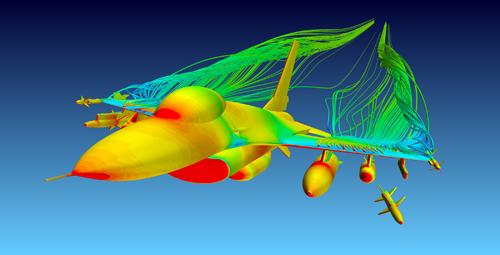CFD Tool Adds Moving Object Simulation
April 10, 2012

Tighter integration between CAD and CAE is an ongoing trend -- one we've been hearing more about as engineering organizations call out for solutions to address mounting product complexity and escalating development costs. In response to surging user demand, vendors on both sides of the aisle (CAD and CAE, that is) have been steadily stepping up to the plate to deliver new platforms that meld capabilities from these historically very separate and siloed design toolsets.

The most recent example of bridging the CAD/CAE gap comes from CD-Adapco, a provider of Computational Fluid Dynamics (CFD) and Computer Aided Engineering (CAD) software. The latest release of the company's STAR-CCM+ multidisciplinary software builds on the company's strategy to let users drive CAE from any of the popular CAD environments, allowing for less back and forth between systems, and, ultimately, more widespread use of simulation.
In a presentation introducing the new STAR-CCM+ v7 platform, Jean-Claude Ercolanelli, CD-Adapco's senior vice president, product management, reiterated the company's commitment to support a growing number of CAD readers for importing 3D models, in addition to other improvements like faster and easier meshing and the CAD-client model checker that debuted in the previous Star-CCM+ v6.06 release.
Along with the closer ties to the CAD world, the initial STAR-CCM+ v7.02 release (there will be three releases annually) includes a number of other capabilities designed to offer insight into product behavior and performance, and help companies increase product quality and reliability.
One of the newer, more interesting capabilities is overset meshes, a paradigm shift in how simulation is handled in the tool. Required when simulating bodies with extreme range of motion or for parametric design studies, this new capability cuts down the analysis workflow by allowing one mesh to be placed on top of another without the need for remeshing or morphing. Company officials are touting it for marine, automotive, or aerospace applications.
A new solution history capability helps engineers review and better explore the analysis results space. With this new feature, users can better facilitate design reviews by recording, storing, comparing, and visualizing results from different analysis types, while also recording results from multiple simulations into a single simulation history file so they can easily be replayed. The third major enhancement is a new interface type called indirect mapped interfaces, which is designed to ease the process around setting up CHT cases.
Related posts:
About the Author(s)
You May Also Like



